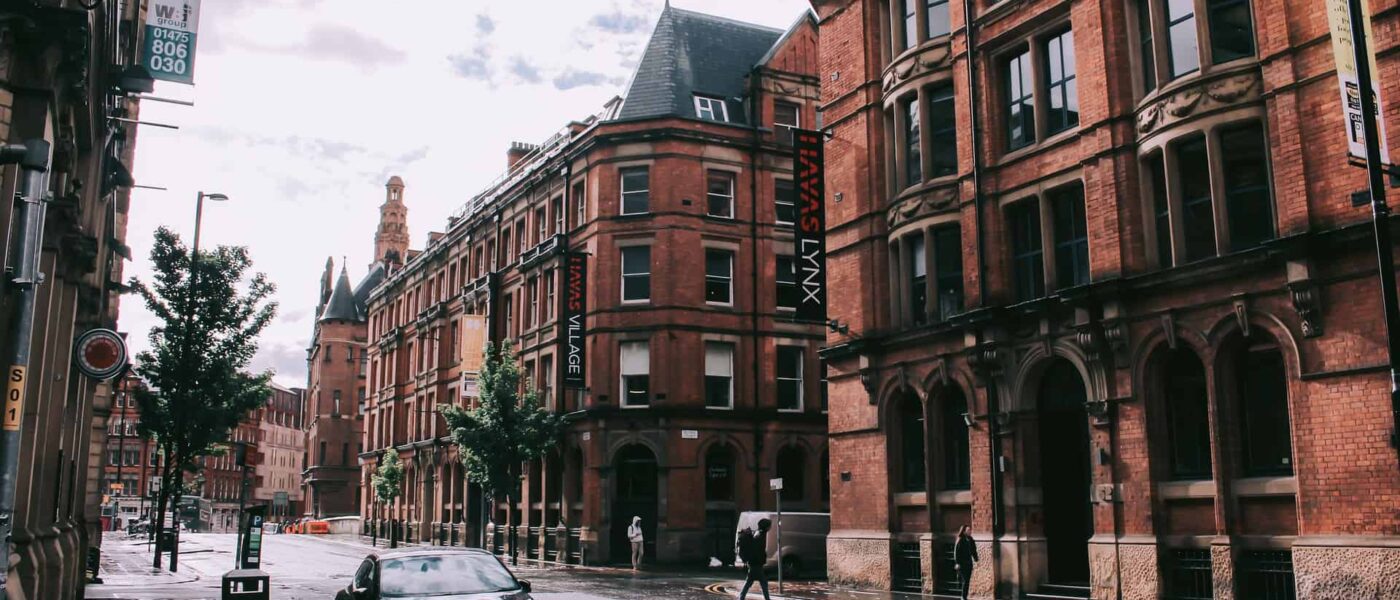
England, a country with a rich history, fascinating culture and picturesque landscapes, attracts countless visitors worldwide every year.
However, before you embark on a trip to the heart of the United Kingdom, you should familiarize yourself with some key England travel tips to help make your stay as pleasant and smooth as possible.
So, if your next destination is London, Birmingham, or Liverpool, take note because we’ll give you good-to-know England travel tips.
Here is an overview:
Climate in England
England is known for its temperate, humid oceanic climate, which is largely determined by its island location and the influence of the warm Gulf Stream. Due to these geographical characteristics, the country has moderately warm summers and rather mild winters.
Temperatures in England vary from region to region. The southwest benefits most from the Gulf Stream, meaning winters are milder. Average maximum winter temperatures are around 8 degrees Celsius, and nighttime temperatures rarely drop below freezing. Summers are pleasantly warm, with average temperatures of 18 to 19 degrees Celsius, with nighttime temperatures dropping to 11 to 12 degrees Celsius.
In the east of England, the summer months are slightly warmer, with temperatures two to three degrees higher than in the southwest, but winters are colder. Snowfall can occur in winter at higher altitudes, while the summer heat occasionally reaches considerable peaks.
Regarding rainfall distribution, southern England, particularly the south coast, is relatively dry with annual rainfall of about 500 mm. In contrast, the northern regions, such as the Lake District, receive up to 2,000 mm of rain annually, making it the wettest region in England.

When is the Best Time To Visit England?
England is characterized by having a humid climate. For that reason, we recommend that you choose to travel between May and September to have better weather.
And even so, it is possible that one day you will get a downpour, so carry an umbrella in your suitcase.
It’s also better because the days are infinitely longer and you can make more of them. Traveling to England in winter also has its magic because you will surely see snow somewhere.
In more detail…
When planning a trip, it should be noted that the winter months in England are characterized by frequent rain, shorter days and fewer hours of sunshine, which can limit the attractiveness for tourist activities. Therefore, spring and fall are often recommended as the ideal times to visit. The summer months are the high season, which can lead to crowds at beaches and popular attractions.
For garden lovers, the main flowering season is in late spring. Hikers should choose the warmer months for their activities, but should still bring weatherproof clothing.
Anyone planning a trip to England should be prepared for changeable weather. The best time to visit depends mainly on your preferred activities and experiences and whether you want to avoid crowds.
Related read: Places to Visit in England Other Than London
What to Pack When Visiting England
When traveling to England, you can never lack clothes for the cold, even if you travel in the middle of August.
As described above, the weather in England is often characterized by a mixture of clouds, wind and occasional showers. There are also sunny spells. Due to the most moderate temperatures of around 17 degrees Celsius, long pants are recommended. A T-shirt as a base layer with a sweater over it is also a good choice, as it can be taken off if necessary in warmer temperatures.
A water-repellent rain jacket should also be considered to protect against unexpected precipitation.
For your feet, closed shoes and socks are recommended for comfort and protection in a variety of weather conditions.
An umbrella can also be carried as extra protection against the rain, just in case.
Last but not least, sunglasses are a must to protect your eyes on sunny days.
Also, in big cities, you will walk a lot, so we recommend wearing good sneakers.
We recommend that you check the weather forecast a day before traveling to know what temperatures you will encounter and thus be able to pack your suitcase better.
If you are going on some kind of sea adventure, joining British Isle Cruises is a fun option, and you should prepare more for it, as sea tours can last up to a week.
Related read: Top Sailing Spots Around The South Coast of England

Drinking Water in England
You should know that the water in England is drinkable (in theory). For that reason, you could carry a reusable bottle with you and refill it at the tap. You will save money and save plastic for the planet.
Water flows through England’s green expanses, treated to European drinking water quality standards. An invisible wall of chlorine protects it from bacterial attack as it travels through the pipes, guaranteeing purity but sacrificing taste on the ‘altar of cleanliness’ – a sacrifice that, while not harmful to health, is a palate cleanser.
This liquid of life, however, often flows through the pipes of an epoch that should have been renewed long ago. In the beating heart of London, for example, pipes, silent and proud in their ancient splendor, bear witness to times gone by, when today they should be releasing a fresh elixir of life through their pores.
So the water in England’s countryside stands clear, but with a touch of yesterday, singing the praises of antiseptics, but also the ballad of the need for modernization.
Driving in England
In England, as in Scotland, you drive on the left. This means that if you rent a car to go on a road trip, you will have to get used to driving in the opposite lane than in most other countries. But don’t worry, in a while you will have it mastered.
When driving in England, travelers should be aware of a number of traffic laws to drive safely and in compliance with local regulations.

Speed Limits in England
- In urban areas: 30 mph (about 48 km/h)
- Outside urban areas: 60 mph (about 96 km/h)
- Expressways and motorways: 70 mph (about 112 km/h)
Vehicle Adjustments
Touring motorists must ensure that their vehicle headlights are designed for left-hand traffic in the United Kingdom. Vehicle owners should contact the manufacturer or a specialist workshop to determine what, if any, modifications are required.
Alcohol Limits
The legal blood alcohol limit for driving in England and Wales is 0.8 per mille, while Scotland has a lower limit of 0.5 per mille.
Right-of-Way Rules
Roads without a clear right of way are either marked with “STOP” or “GIVE WAY” signs or by road markings such as double white lines (full stop required) or double dashed lines (slow approach). The priority rules for major roads generally apply at intersections without clear priority rules, but there may be some confusion.
On roads with the same priority, especially in rural areas, you should communicate with each other about the driving order, as there are often no traffic signs.
Behavior at Roundabouts
- When entering a roundabout, make sure you are in the correct lane. Traffic in a roundabout has priority unless otherwise indicated.
- To exit the roundabout at the next exit (left turn), turn left as you enter and stay in the outside lane.
- If you are going straight, do not signal when entering and choose the left or center lane. After the previous exit, begin to turn left.
- To exit the roundabout at the third exit (right turn) or when driving a full circle, turn right when entering the roundabout and stay in the right lane. After the previous exit, switch to the left turn signal.
Parking Rules
- No parking or stopping is indicated by a double yellow line.
- Parking is prohibited when there is a yellow or red line at the side of the road, although short stops for loading and unloading are permitted.
- A broken yellow line indicates a temporary parking prohibition.
- Official parking areas are marked with a “P.”
Additional Prohibitions
- Smoking in the vehicle is prohibited if minors under 18 are passengers, unless the convertible has an open top.
- Telephoning while driving is permitted only with a hands-free device.
In general, it is important to familiarize yourself with the traffic regulations of the country in which you are traveling to ensure a smooth and legal journey.
Electric Appliances in England
The electrical voltage in the UK is 230 volts at a frequency of 50 hertz. For appliances not designed for this voltage – such as some electrical appliances from the USA, which are designed for 110 volts – a voltage converter may be required in addition to the plug adapter.
For travelers wishing to bring electronic equipment into the UK, it is important to note that the standard electrical outlet in the UK is a G-type outlet.
You will usually need a plug adapter to use electronic equipment purchased outside of the UK. This is because the plug’s shape and the contacts’ position differ from those in many other countries.
English sockets have a high level of safety. They have a central grounding contact and insulated contacts that protect against direct contact with electrical conductors, which is an important safety measure, especially for children. In addition, the plug has a built-in fuse to minimize the risk of fire due to short circuits and increase safety. The system is designed to prevent reverse polarity, which could result in the wires being interchanged.
It is important not to attempt improvised solutions, such as adapting or modifying plugs and sockets, as this can lead to a high risk of fire due to overheating.
In summary, operating foreign electrical equipment in the UK requires careful preparation to ensure compatibility and compliance with safety standards.
IMPORTANT: If in doubt, consult a specialist retailer before departure to obtain the appropriate adapters and voltage converters.
How Safe is England for Tourists?
In general, England is a safe country. In any case, we advise you to be careful with your belongings in the most touristy places.
In big cities like London, there tend to be more robberies, especially among tourists. In this case, we always recommend that you carry a copy of your documentation in your email in case your wallet is stolen.
Surveillance Cameras in Public Spaces
The issue of government surveillance and privacy is at the forefront of public debate in the UK. Coined by the term “Big Brother” from George Orwell’s dystopian novel “1984”, the term is now synonymous with a comprehensive surveillance system.
In England, surveillance cameras, also known as “closed circuit television” (CCTV), are particularly striking. These cameras are ubiquitous, forming a surveillance network that extends from airports, train stations, and fast-food outlets to urban street corners.
The cameras are always on, continuously recording what is happening in their field of view to serve as a source for analysis and investigation when needed. It quickly becomes apparent to travelers that there is little escape from this surveillance.
Use and Effectiveness of Surveillance Technology
It is appropriate to question the manner of implementation and the cameras’ effectiveness in relation to the objectives set. The question arises to what extent the humorous warning “Smile! You’re on CCTV”, posted in many places in England, may express bitter cynicism reflecting the public’s ambivalence towards this type of surveillance.
A balanced view and ongoing assessment of the impact on society, which has both security and ethical aspects, is essential in addressing this issue.
Please remember that as a visitor to the UK, you are part of this extensive surveillance network, and it is advisable to be aware of your rights and responsibilities regarding your personal data and its protection.

Currency in England
The UK, and therefore England, does not belong to the European Economic Union. In England, there are no euros but Pound Sterling (GBP), recognizable by the currency symbol £.
So having some British pounds with you when you enter the country or get them on arrival is advisable. There are several options for exchanging currency and to pay within the country:
- Banks: These institutions usually offer currency exchange services and are open between 9:30 a.m. and 4:30 p.m. on weekdays, although some banks may have different hours.
- Post Offices: Many post offices also offer currency exchange services.
- Hotels: Some hotels offer currency exchange services, although the rates are not always favorable.
- Bureau-de-Change: These specialized bureaux de change can be found at international airports and in city centers and are considered convenient points of contact for tourists.
- ATM: Another option is to withdraw money directly from an ATM in England, although the fees are usually high depending on the type of credit card you have.
- Credit Card: You can pay by card in most establishments. This way you won’t need as much cash and it’s more cost-effective to pay by card in terms of commissions.

A Note on Banks in England
The usual opening hours of banks in England are 9:30 am to 4:30 pm on weekdays, but these can vary depending on the bank and location. Please note that banks are not open on public holidays.
Visitors are advised to check the bank’s opening hours in advance or to research them on the Internet to plan their currency exchange accordingly.
Important Note
It’s advisable to compare exchange rates and possible fees in advance to ensure a favorable exchange rate. Prepare well by checking with your bank for currency exchange conditions and possibly having a certain amount of money converted into pounds sterling in your home country.
Tipping in England
On trips to England, you must consider the issue of tips. Although it is not mandatory, in England, it is common to leave a 10% tip if you have been happy with the service.
And we’re not just talking about restaurants but also about taxis and hotels. If you want to avoid spending this money, eating in restaurants without table service and using public transportation is best.
Here are some guidelines for tipping in the United Kingdom.
Restaurants, Bars and Pubs
In restaurants, it is customary to tip 10 to 15 percent of the total bill, unless a service charge is already included in the bill. If a service charge is added automatically, no further gratuity is required.
Watch out: We’ve seen several times that the tip gets added automatically onto the bill, so watch out. There is no need to tip twice!
However, it is not customary to tip for drinks in pubs and bars.
Related read: A Guide to Regional British Food
Hotels
For services such as taking luggage to your hotel room, giving the porter about £2 is customary. If you use room service, you can leave a tip depending on your level of satisfaction. The same applies to the cleaning staff.
Taxi
It is customary to round up the taxi fare to the nearest full pound. If the driver was helpful with your luggage or the service was particularly good, a tip of 10 to 15 percent of the fare may be appropriate.
Barber Visits
A 10 percent tip is appreciated for good service when visiting a hairdresser.
Important Note on Tipping
Please note that tips should always be given in the local currency, i.e. Pounds Sterling. Euro coins or Dollars cannot be used by recipients in the UK and cannot be exchanged.
Be aware that tipping is a value to the service provider and should be based on personal satisfaction. Appropriate financial recognition shows respect and appreciation.
That’s it for our England travel tips! We hope you found some useful insights while planning your trip to England.









